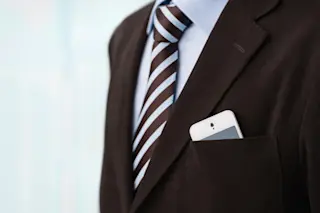A drained smartphone battery often sends us hunting for the nearest outlet, if there even are any. But within a decade, we might be wearing the outlet.
In a world of fabrics infused with the power of the sun, recharging could be as simple as plugging devices in to our clothes. Helping this potential future along, chemist John Badding and his colleagues at Pennsylvania State University recently embedded solar cells within flexible wires that can be woven into fabric.
Badding's solar cell functions just like a common, rigid kind, but with a fiber-optic housing that enables it to bend into a loop.
The flexible wires assume the same basic arrangement as a common type of rooftop solar cell, which contains a negatively charged layer, a positively charged layer and a neutral material sandwiched between them. When photons (light particles) from the sun smash into the outer layer of the rooftop ...















